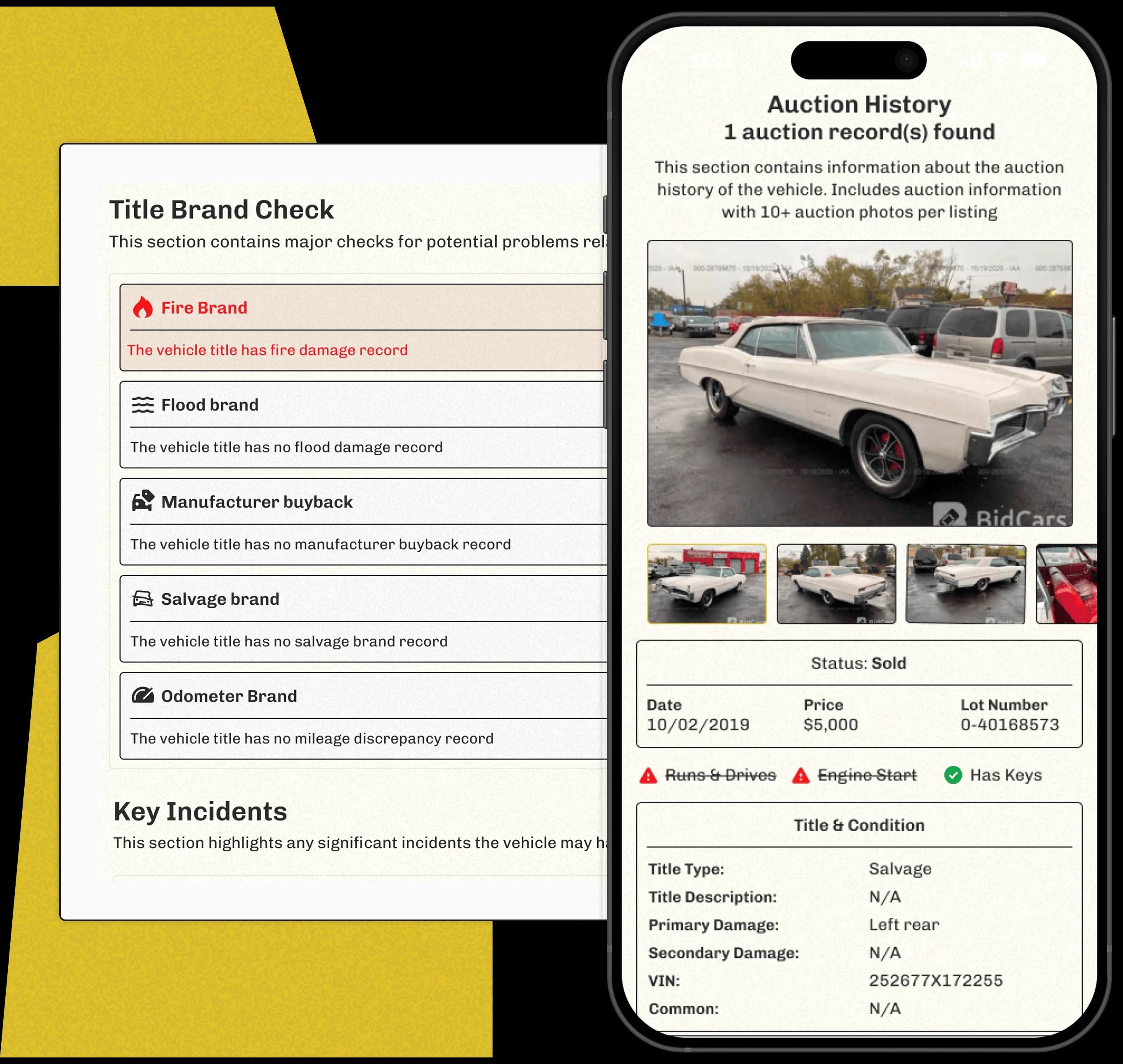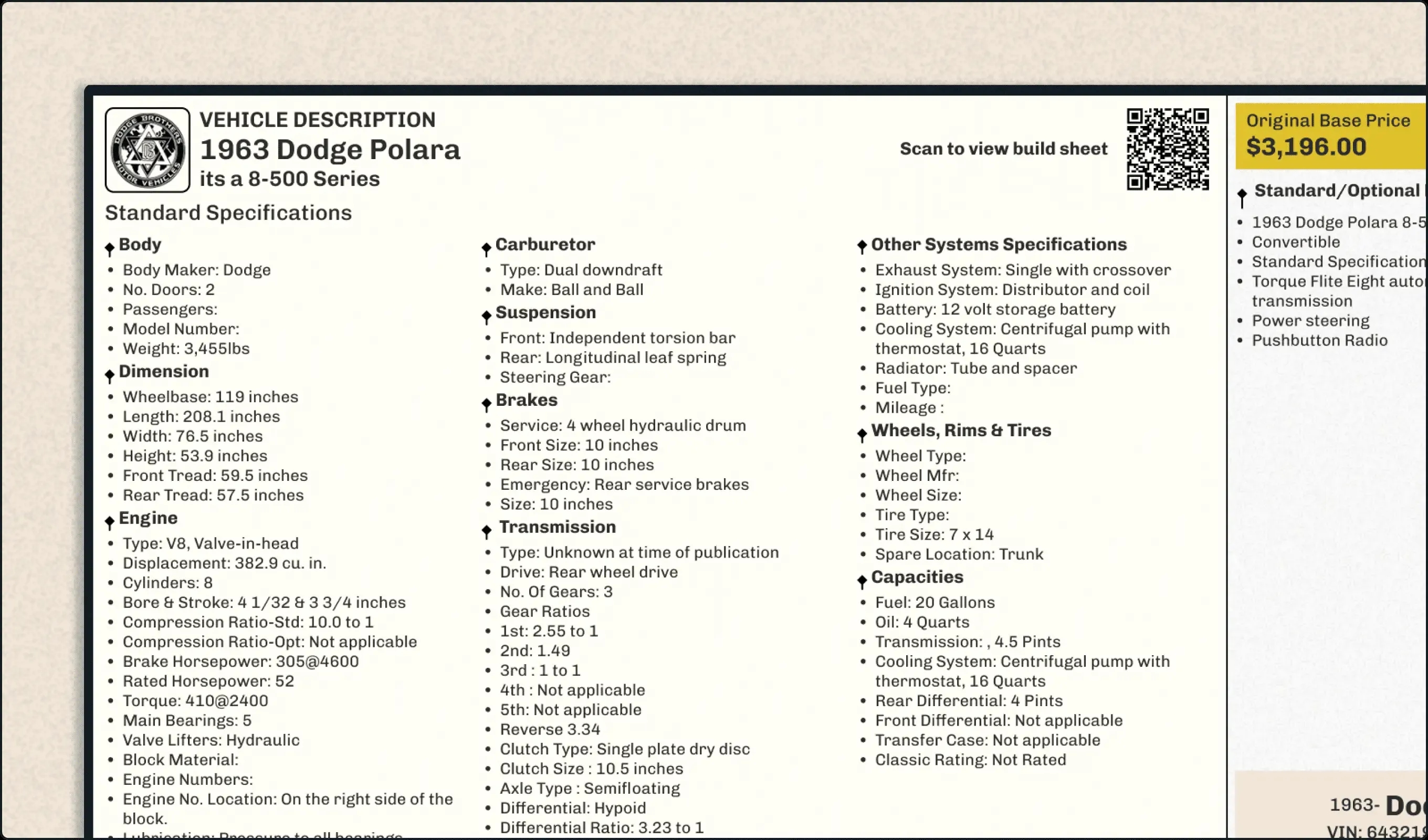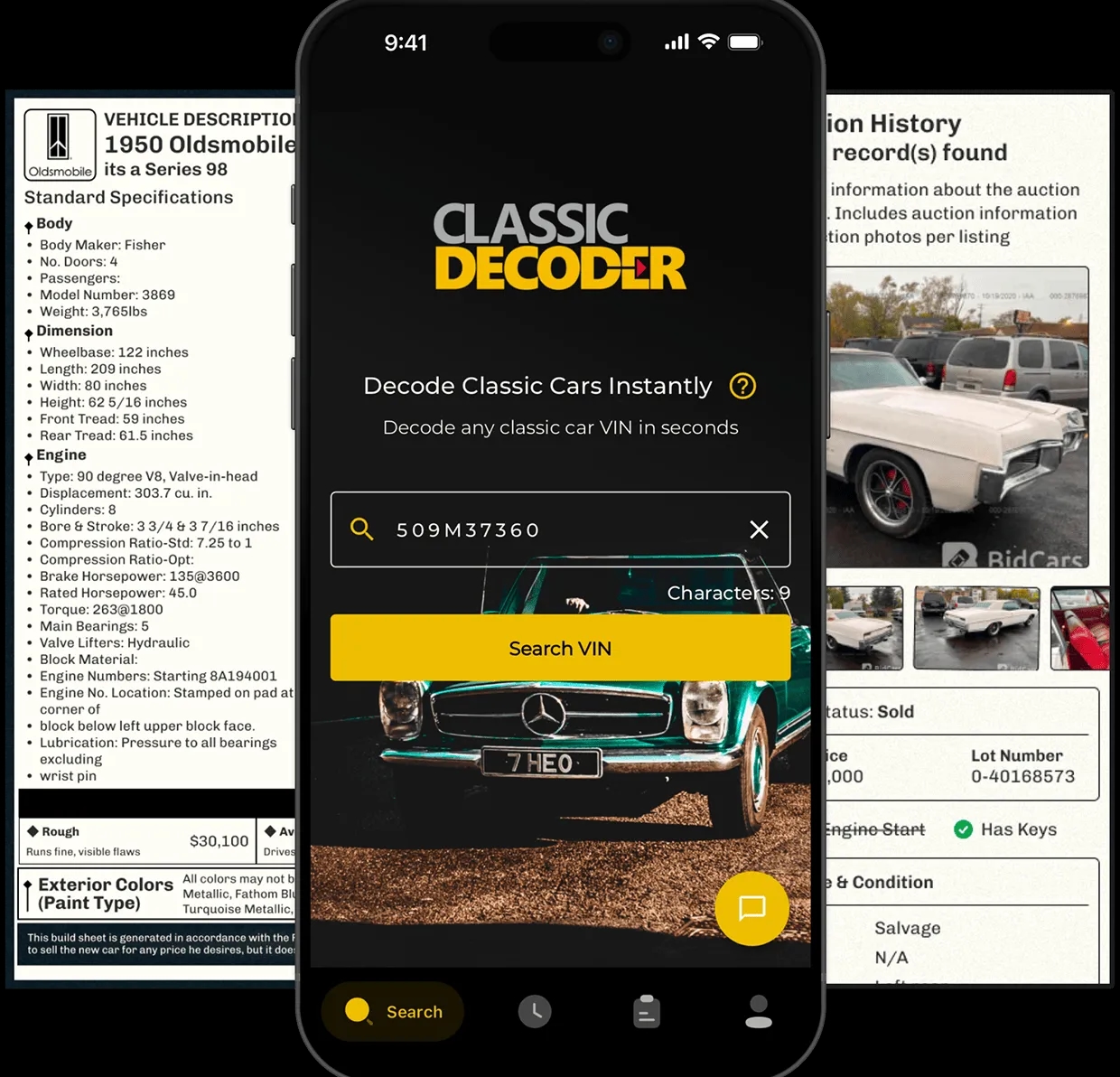1968 Buick Custom
The 1968 Buick Custom: a big, comfy cruiser embodying late-60s style. Think generous chrome, a long hood, and that classic Buick elegance. It reflects a time of prosperity and big cars, though overshadowed by wilder muscle car siblings. A solid, stylish ride representing a bygone era.
Decode Classic VINs to Get Vehicle History Report and Build Sheet
History of the 1968 Buick Custom
The journey of the 1968 Buick Custom began at a turning point in automotive trends. Buick took bold steps in design and engineering, aligning its vehicles with consumer cravings for comfort, safety, and style. This model showcased a semi-fastback style, heavily influenced by the restyled Riviera—an emblem of the brand's innovative path.

1968 Buick Custom Models:
Select the vehicle's model to see the correct data for it.
How Much is Buick Custom Worth?
Original MSRP :$3,527.00
Outstanding
Clean
Average
Rough
1968 Buick Custom Specs
Interested in buying a classic car or selling one?
Access detailed history reports for classic vehicles from hundreds of manufacturers.
- Accident Records
- Theft Records
- Loan & Lien Information
- Auction Information
- Salvage Information and more

Design and Features
A standout feature for the 1968 model was the adoption of federally mandated safety components. This included side marker lights and shoulder belts, which added an extra layer of protection. From the semi-fastback design to luxury options like air conditioning, which was a big deal back then, it certainly turned heads. Are you curious about decoding those vintage VIN styles? The could be a handy tool.
Learn more about a classic car: Get Build Sheet by VIN.
Access reproduced classic build sheets to learn more about your classic vehicle details.
- Standard Specifications
- Original Base Price
- Standard & Optional Equipment
- Exterior & Interior Colors
- VIN ID & Location description

Performance and Market Reception
While the muscle car wave was dwindling, the 1968 Buick Custom managed to maintain a perfect equilibrium between performance and practicality. With multiple engine options, it became a strong contender in the mid-sized car segment.
Collectibility and Legacy
Nowadays, well-preserved 1968 Buick Customs are highly sought after among collectors. This demand fuels a rising market value, offering nostalgia for '60s automobile aficionados. A car build sheet can provide detailed information for enthusiasts keen on understanding every aspect of this vehicle's past.
1968 Buick Custom Gallery



Pop Culture's Love Affair
Popular culture has cast the 1968 Buick Skylark into the limelight on several occasions. It became part of the larger narrative of American automotive culture, even making cameo appearances in films and TV shows.
Famous Figures Who Own 1968 Buick Skylark
Jay Leno
During his vast career, Jay Leno has been as much about the laughs as he has been about his collection of classic cars. His passion included owning a 1968 Skylark, which increased the model's status among classic cars.
Paul Newman
Not just an actor but a motorsport aficionado, Paul Newman's ownership of a 1968 Skylark adds more glamour to its already stellar reputation.
Market Dynamics
The link between celebrities and classic cars often adds a layer of prestige that can elevate market values. It's a fact that stars like Leno and Newman boost the desirability and cultural significance of vehicles like the Skylark.
Price Records and Valuation
From auction floors to private sales, the demand for the 1968 Buick Custom has resulted in noteworthy price records. Specialized manuals and guides related to this model also show significant demand. If you're purchasing or selling one, a ensures you have all the right information at your fingertips.
Performance Metrics
Though not a record-breaker in speed, the 1968 Buick Custom offered respectable stats in its era. Its Gran Sport variant stood out with notable acceleration figures, while the Skylark supplied a robust mix of power and everyday utility.
Practicality and Criticisms
Despite its glamorous facade, the Buick Custom faced its share of critiques for fuel efficiency, reflecting the constant trade-offs between speed and practicality.
Interested in Buying or Selling a Classic Car?
Understanding a vehicle's past can make or break a transaction in the classic car market. Consider these key elements when dealing with classic vehicles:
Accident Records: Unveils any past mishaps.
Theft Records: Identifies if the car has ever been stolen.
Loan & Lien Information: Clears any financial obligations tied to the car.
Auction Information: Reveals its history in the auction market.
Salvage Information and more.
For the Enthusiasts
If you're venturing into the world of classic cars, tools such as a or a can be incredibly useful. Even when seeking a , equipping yourself with proper research ensures that you make informed decisions.
Whether you're eyeing to purchase your dream car or simply want to decode those cryptic VIN numbers, exploring these resources promises you a smoother journey into the heart of classic car ownership.
Classic VIN Decoder App |Now available on both Android and iOS!
At Classic Decoder, we believe that developing a mobile app is a great way to extend our classic car data solution hub to as many users as possible across the globe. Our app is built with users and precision in mind. It holds the key to unlocking the history and details of any retro car at your fingertips. It also comes with fascinating and user-friendly features that make it stand out from other mobile apps designed for this purpose.
The Classic Decoder app lets you decode and lookup any classic VIN in a flash. Access accurate vehicle information and history, make an informed decision faster, and buy and trade in classic cars with confidence.

Download The Classic Decoder App now.
Some unique features include:
- Support all classic VIN lengths from 5 to 13 digits
- Support classic cars produced from 1910 – 1980
- Online Garage features – to add and manage your vehicles
- 24/7 Customer Support
- Easy onboarding for first-time users
Explore Buick Custom from Other Years
Frequently Asked Questions
Well, the '68 Buick Custom, it's a real looker, isn't it? Think of it as the slightly more down-to-earth sibling of the fancier models. Key features include its full-sized body style, that long hood, and the unmistakeable Buick styling cues of the era. You'll notice the distinctive grille, those big, sculpted tailfins—that's pure '60s Americana, my friend. You know, it really captures the spirit of the time. It wasn't as flashy as some other Buicks, but it was still a solid, dependable ride. Under the hood, you'll likely find a V8—that's the heart of most '68 Customs; though there might be some exceptions, of course, depending on options and such. It's a car that screams 'classic American muscle', even if it doesn't exactly have the raw power of some of its sportier contemporaries. It's about style and presence, you see?
The 1968 Buick Custom offered a range of V8 engines; I mean, what else would you expect from a big, American car, right? You could get anything from a relatively small (by today's standards!) 350 cubic inch engine all the way up to a whopping 400 cubic inch behemoth. Think of it like choosing your coffee; some people prefer a lighter roast, while others crave a stronger, bolder flavor, you know? Now, the exact horsepower and torque varied depending on the specific engine chosen, so you'll want to dig into the specifics if you're a true engine head. But generally speaking, these were powerful motors, capable of moving that big car around pretty nicely. It wasn't exactly going to outrun a sports car, but it had enough oomph for everyday driving and maybe a little bit of weekend fun.
Compared to its competitors, like the Ford Galaxie or the Chevrolet Impala, the '68 Buick Custom kind of sat in the middle of the pack. It wasn't the sportiest; that would be the GS, now that was something. But, it had more panache than some of the more utilitarian full-sized models. Picture it this way: it's the comfy armchair, not the race car seat. It offered a balance of comfort, styling, and performance that made it a popular choice for families and everyday drivers. The comfort, especially the ride was excellent. The overall feel was one of refined comfort more than outright power or sportiness. And, let's be honest, that was perfectly fine for many buyers back then.
Like any classic car, a '68 Buick Custom will have its quirks. You know, it's not exactly a new car! Common problems include things like brake systems needing attention, electrical gremlins (those old wires can be temperamental!), and potential issues with the transmission or carburetor. Think of it like an old friend – you know their little quirks and you love them all the same. But, of course, expect to do some preventative maintenance; it's part of owning a classic. Finding a well-maintained example is key, and a thorough inspection by a mechanic who knows these cars is absolutely essential before you commit to a purchase. Don't cut corners, you'll regret it.
The value of a '68 Buick Custom varies wildly based on condition, mileage, and options. A well-restored example can fetch a pretty penny; I mean, we are talking about a classic car here! But a car that needs work might be available for significantly less, although it will be your project. Think of it like buying a house – location, location, location. It's best to do some research on online classic car marketplaces to get a feel for current prices, and to check the values based on your specific local market. You should always consider the amount of needed restoration and any repairs needed to truly understand the value and price.

